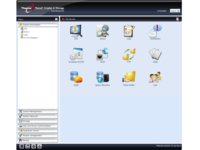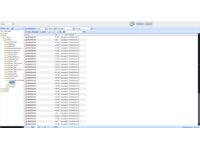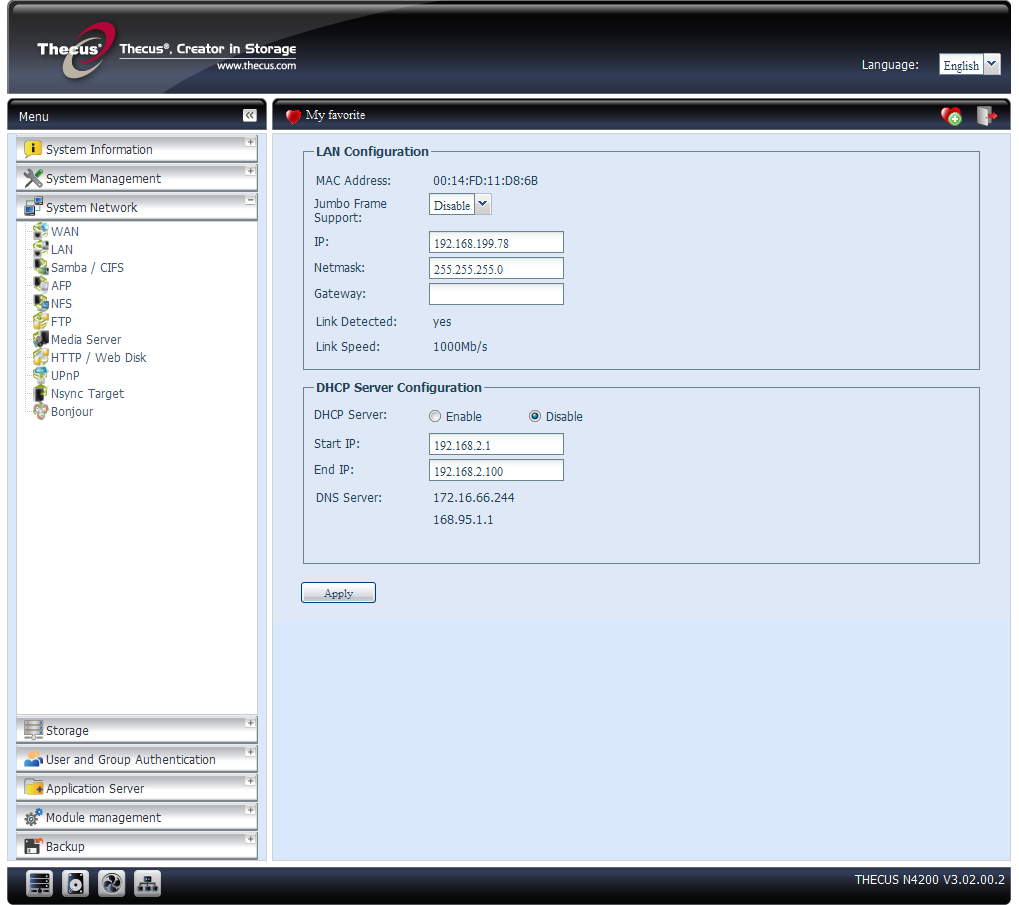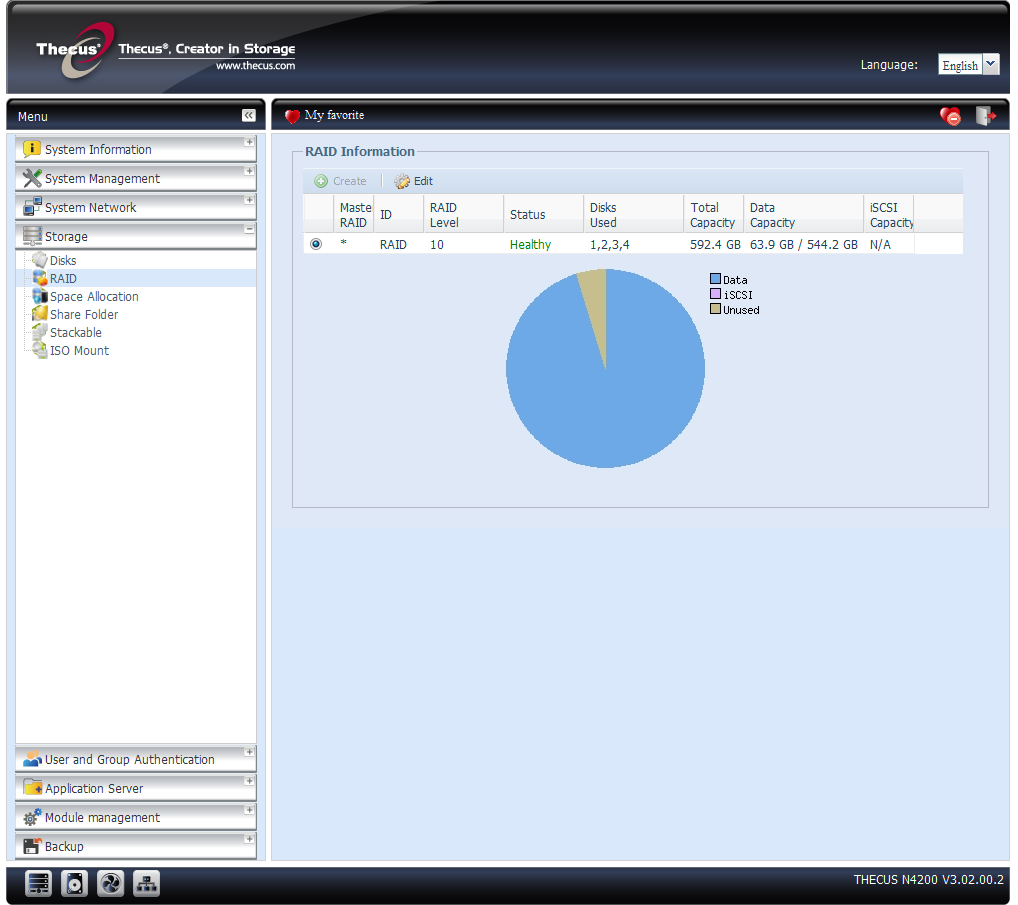Atom-Powered NAS: Thecus N4200 And QNAP TS-459 Pro
Intel's most modern dual-core Pineview-based Atom processor isn't just aimed at energy-efficient netbooks. It can also be found in NAS servers from a variety of manufacturers. We tested two mid-range appliances in order to measure the CPU's capabilities.
Thecus N4200: Web Interface And Features
In addition to the hardware specifications of a NAS device, you have to take into account its software functionality. In recent years, Thecus has evolved well on both fronts. The N4200 comes with a modern, Web-based administration interface that lets you choose from RAID 0, 1, 5, 6, and 10 modes. RAID volumes can be optionally encrypted using AES-256, as well. Additionally, users have the choice of ext3, XFS, and ZFS file systems.
Network Communication
The N4200 can communicate via iSCSI and, if used under Windows, MacOS, or Linux, it can be an iSCSI target. When used with similar (and various other) NAS devices from Thecus, such as the N5200 Pro, N5500, or units from the N7700/N8800 series, the N4200 can even be used as an iSCSI initiator. The device supports SMB/CIFS, FTP, NFSv3, AFP, HTTP, or HTTPS protocols for exchanging data.
For multimedia storage, the Thecus N4200 comes with iTunes, UPnP AV, and photo Web servers installed. It also comes with a print server, as well as support for various UPSes. The server functionality can be expanded. For example, you can add a Web or MySQL server by downloading and installing a module from the Thecus site.
A Web Interface With Delays
Thecus' UI is functional and for the most part logical, although the menu structure could be made somewhat less nested and more accessible. What really struck us when using firmware version 3.00.12 was the sluggishness of the browser-based interface. When clicking on something or performing an action, it took about three seconds before anything happened or you gave visual feedback. During testing, we also noted that the N4200 had to be restarted after the creation of a new folder. The device stopped responding to SMB/CIFS requests, so access through Windows Explorer was no longer possible. A firmware update from Thecus should remedy problems of this kind.
Thecus offers a live demonstration of its GUI. Just follow this link to try it out: Thecus live demo.
Get Tom's Hardware's best news and in-depth reviews, straight to your inbox.
Update: Thecus recently released version 3.02.00.2 of the firmware. Using this, we noticed none of the problems mentioned above, so be sure to update your firmware if you run into any issues with the N4200.


Current page: Thecus N4200: Web Interface And Features
Prev Page Thecus N4200: Features And Build Next Page QNAP TS-459 Pro: Features And Construction-
pletopia ummm .. why would i pay that much for 4-bay NAS ?? i have 2 thecus N7700's and i got them for ~$900 nearly a year agoReply -
fatedtodie I have a thecus 4100pro with 4 drives it was less than 800 bucksReply
not sure what the advantage of the 4200 is over that except for the battery and that is what a UPS is for. -
cknobman $700-$950!!! Holy cow those are expensive. While I see the purpose for these I just cant justify spending that kind of cash for one.Reply
I just built me a data/media server with exponentially more power for only $533 tax/title/license and no freaking rebates.
My build may consume more power than these but it is much more versitle than these NAS boxes and at least a few hundred bucks cheaper. Plus I it will be suited to use as an HTPC or workstation if ever needed.
FTR the build is: LiteOn dvd burner, MicroATX tower case (6 3.5 bays), 2 Samsung EcoGreen 2tb hd (will be raid 1), AMD athlon x2 250 (65w), Gigabyte ga-ma785gm (5 sata2, 6 usb, 1 esata, radeon 4250 integrated graphics, dvi-hdmi-dsub out), Antec EarthWatts Green 380w power supply, 4gb RAM. -
snarfies I build my own Atom-based mini-ITX NAS about a year ago. It cost less than half of this. What I used: MSI IM-945 (at the time the only Atom miniITX board with four SATA connectors), Travla C138 case, Minibox picoPSU-120, A thin Sony Optiarc DVD-RW, a pair of Western Digital Caviar Blue notebook drives in RAID1, and the OS (FreeNAS) boots off a 1gb CF card.Reply -
tommysch NAS are indecently overpriced.Reply
I build my ''NAS'' with a low end PC and 2 SATA controllers. I have 8x 1.5 TB HDDs in 2 RAID-5 config.
Seriously a 4 bay NAS cost like 900$ w/o HDDs... -
zelannii How does the TS459 directly compare to the previous generation, the 459 pro, or even the 439 Pro II? Both run the Atom as well, with the 459 Pro using a Dual Core Atom 1.66GHz.... Both also can run the latest qNap OS as well.Reply
Keep in mind to all the home-NAS and custom guys out there, these units are PROFESSIONAL, not SoHo class units. The qNap 410 and 419 are small business/home units, and even those still include native AD integration, and more, and not only operate as NAS systems, but backup systems, media servers, and more (dozens of features). These still are not even in the "personal" NAS class most home users can build on their own for about the same money. -
zelannii TommySchNAS are indecently overpriced. I build my ''NAS'' with a low end PC and 2 SATA controllers. I have 8x 1.5 TB HDDs in 2 RAID-5 config.Seriously a 4 bay NAS cost like 900$ w/o HDDs...Reply
These are professional class systems, with iSCSI, Native AD support, IP multipathing, load balancing, VMWare certification, and more. These are not cheap "file share" NAS systems like you might want for a media server in your house, or simple storage and backup. Simply features like online data migration to larger disks, archive by file age automatically, IP camera support, iTunes servers, TimeMachine support, and more make these very different from what you can do with a mini-NAS or FreeNAS setup on old PC hardware (not to mention the savings in electricity). qNap does sell "home" system that are less capable, but still FAR more than most people need. If all you want is a bid gisk and media server, get a WHS or a home-built solution. if you;re hooking servers or VMs up to it, using it in a high bandwidth or office environment, and care about the NAS ability to protect itself, back itself up, and migrate data to larger drives later, that's what the $300 price difference covers.



